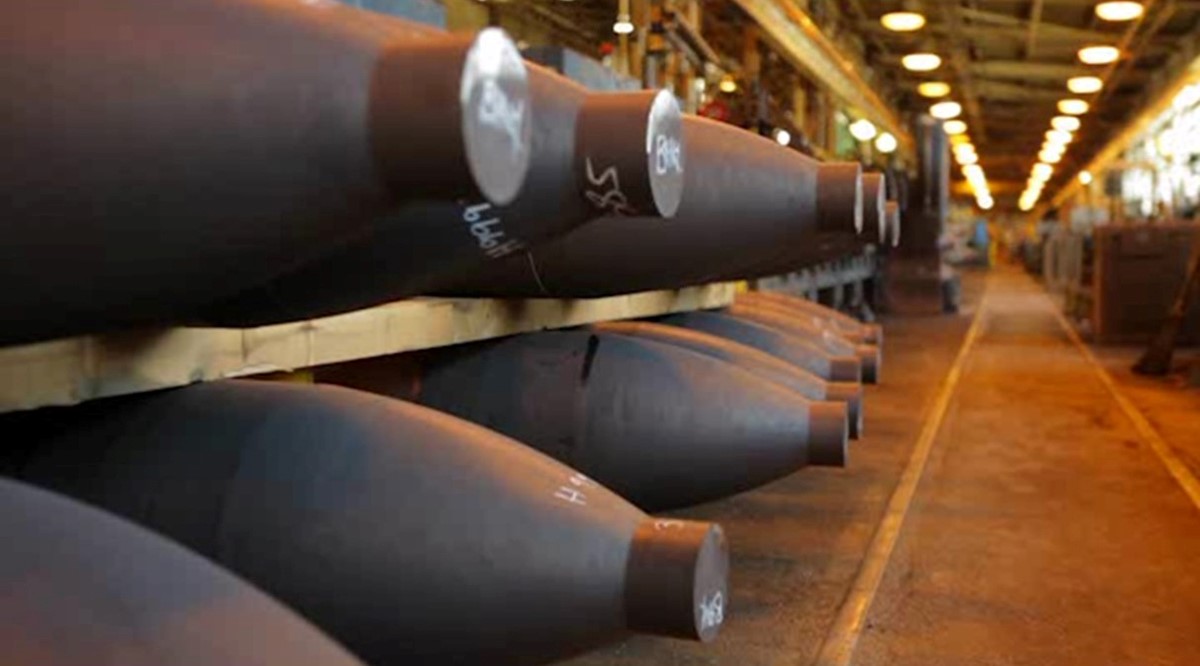Partnership rapidly transitions advanced penetrating weapon
EGLIN AFB, FL – The BLU-137/B penetrating munition will enter into production this year; thus providing warfighters with a low-cost, high-performance, and highly reliable bunker buster weapon that will make a difference in the battlefield today and in the future.
The Air Force Life Cycle Management Center Armament Directorate (AFLCMC/EB) partnered with the Air Force Research Laboratory (AFRL) Munitions Directorate to rapidly transition this weapon.
The BLU-137, also known as the Advanced 2,000 lb. Penetrator (A2K), is an air-delivered weapon that penetrates hardened structures, like concrete bunkers, and initiates within the target area. This weapon promises to give the U.S. Air Force an advanced capability for years to come.
The BLU-137 is an improved version of the BLU-109, a penetrator weapon employed for past 34 years to neutralize hardened adversary assets. While the weapon performed admirably for more than three decades, the threat environment evolved.
The BLU-109 targeted U.S. adversaries who buried valuable warfighting assets in deep, fortified bunkers and tunnels in the 1970s and 1980s.
In 2014, the Office of the Secretary of Defense saw a need to “improve BLU-109 performance against increasingly hardened targets,” and added funding to the weapon program office to make the improvements. The Air Force Life Cycle Management Center Armament Directorate (AFLCMC/EB), the executor of Air Force weapons programs, launched the BLU-137 program.
When AFLCMC/EB needed technologies to make the BLU-137 more survivable and reliable than the BLU-109, they reached out to AFRL for assistance.
We maintain a good working relationship so that [the Air Force] can reap the benefits of [this] close partnership, says Col Garry Haase, the Director of AFRL’s Munitions Directorate.
He asserts that, “our co-location here at Eglin AFB, FL, facilitates greater resource and idea sharing, helping transition our science and technology into the program offices more quickly and smoothly.”
This close coordination supports AFRL in rapidly providing technology options to the program office, Hasse explains.
Col Hasse says that AFRL performs extensive technology research in penetrator weapon technologies and had matured many of the enabling technologies.
Dr. David Lambert, the Chief Scientist at AFRL’s Munitions Directorate explains that pervasive research, often conducted without a specific funding stream, is foundational for maturing Air Force capabilities
Dr. Lambert attributes AFRL’s fast response to its scientists and engineers, some with more than 30 years of experience developing technologies for penetrating weapons
“These experts have gone beyond laboratory design processes to develop robust penetrating weapons,” he says.
“Our engineers are trusted by operators in the battlefield to examine weapons that don’t perform as expected,” Lambert asserts. He explains that, “operational lessons learned [over the years also] help inform future design changes to legacy and future weapons.”
Armed with information from the laboratory and the battlefield, AFRL researchers and engineers began designing a new 2,000 lb. penetrator from the ground up. Engineers identified efficiencies that could be realized by simplifying the weapon design and reducing the number of parts required. AFRL worked with Air Force ManTech office, an Air Force entity focused on agile manufacturing, to save millions of dollars in material and manufacturing costs.
AFRL delivered a family of improved technologies to the BLU-137, making it more capable and survivable than its predecessor, while also reducing the cost per unit. One breakthrough technology was AFRL’s invention of a new high-strength steel (AF96) that eliminates costly conflict minerals and improves weapon performance. The AF96 formula, invented by Dr. Rachel Abrahams, reduces the material costs of the case by half.
AFRL also redesigned several internal components to improve weapon survivability and increase reliability against hard targets, including the fuzewell, aft closure plate, retaining rings and warhead nose.
AFRL researchers and Dynetics, Inc. co-patented the Arming Generator Relocator Adaptor (AGRA) that arms the fuze from the outside of the warhead case. The AGRA preserves the structural integrity of the warhead by removing the large charging well hole and internal plumbing used in the previous design.

BLU-137 warheads are prepared for the next step in the manufacturing process. AFRL’s work to reduce the number of parts and cut the costs of materials while improving performance made this technology a real success.
